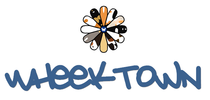Submit Anecdotes of your Guinea Pigs
Wheektown is in the process of a major research project. A component of this is collecting data on certain topics to paint a better picture of some aspects of guinea pig care. Everyone can help out with this by submitting stories of their own guinea pigs. Below is a list of all the information likely to be needed, so chances are you can contribute it many different ways already!

